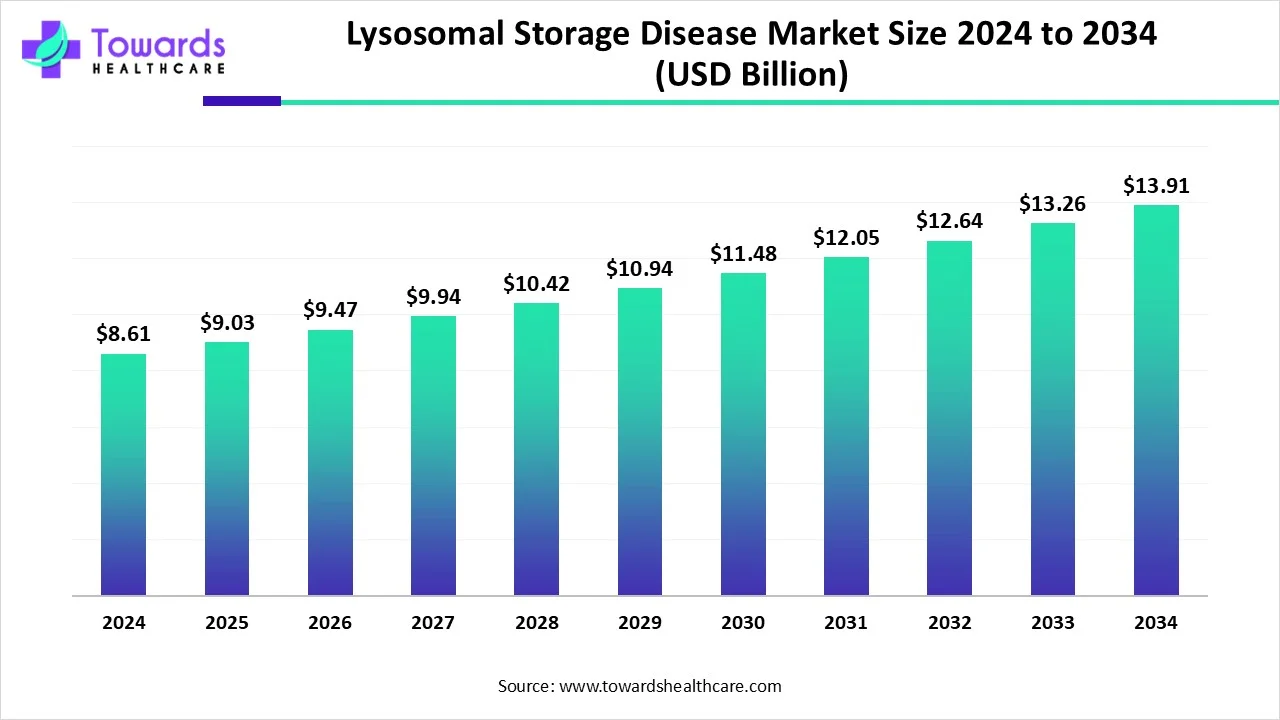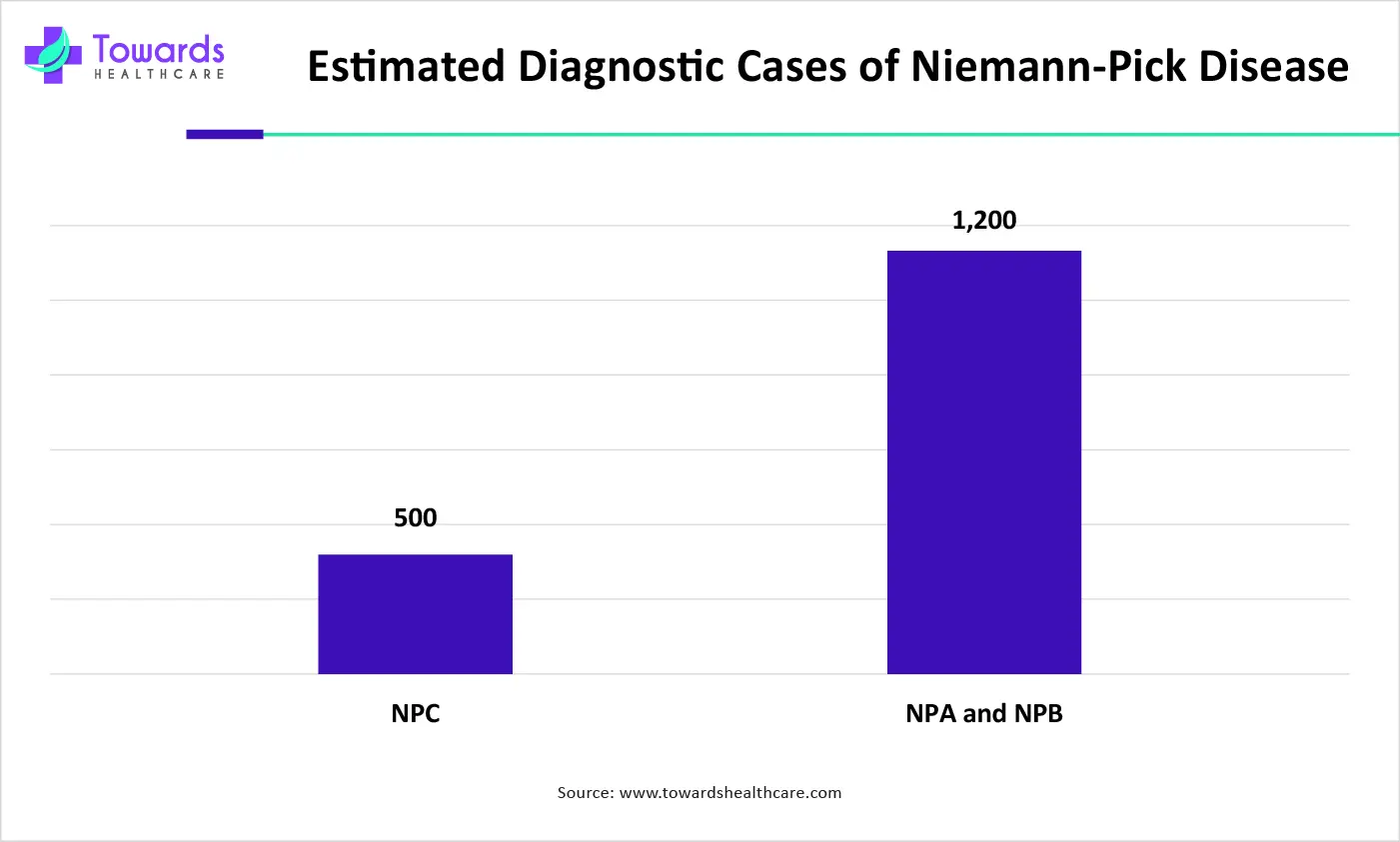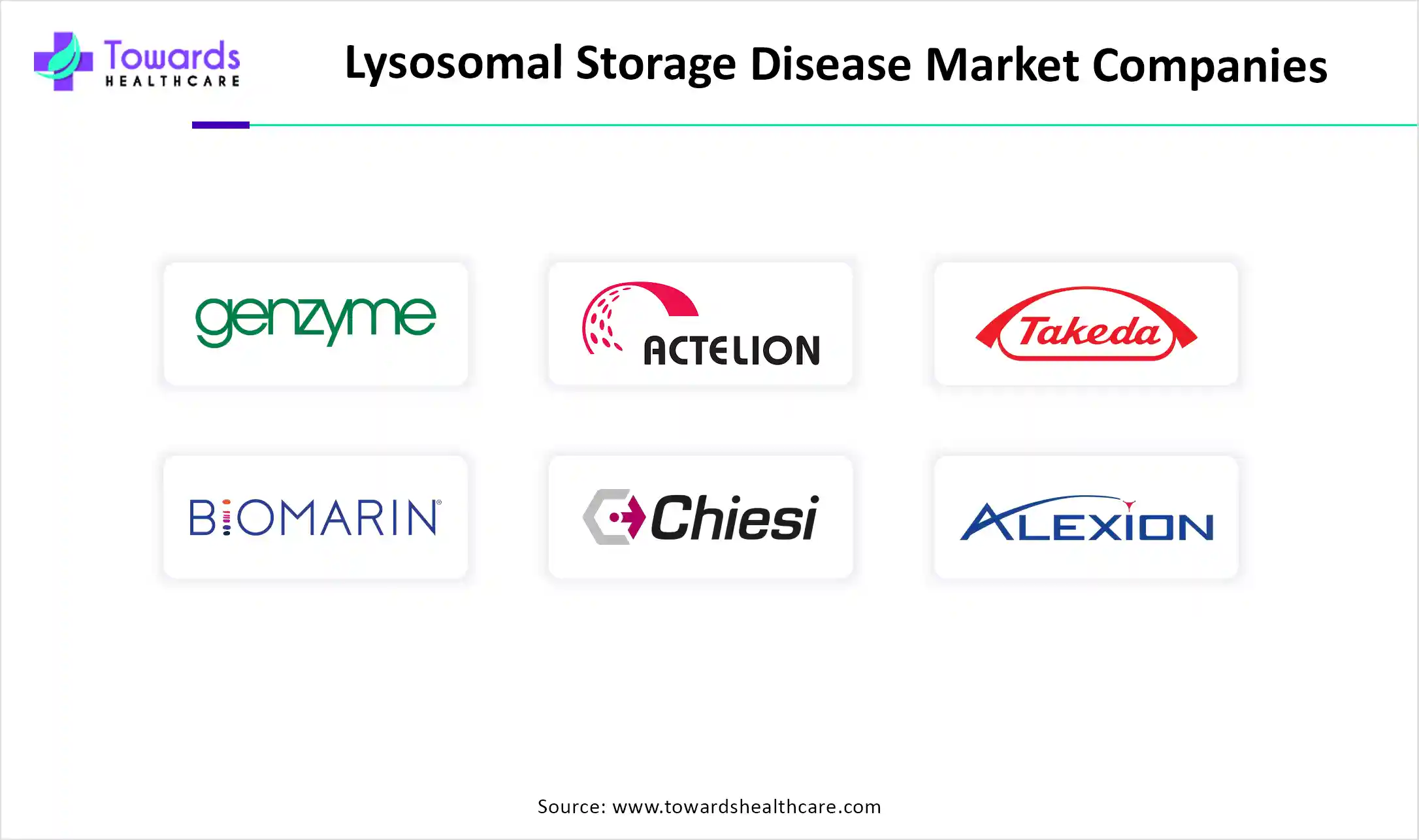October 2025

The global lysosomal storage disease market size is calculated at US$ 8.61 in 2024, grew to US$ 9.03 billion in 2025, and is projected to reach around US$ 13.91 billion by 2034. The market is expanding at a CAGR of 4.93% between 2025 and 2034.

Defects in single genes cause diseases known as Lysosomal storage diseases (LSDs). Approximately 70% of LSDs are due to enzyme defects, and the remaining are due to the associated proteins or enzyme activators. The specific enzyme is transcribed by the specific chromosome locus; if the enzyme coding is improper, then it leads to inactive enzymes. Likewise, due to mutations in activator genes, defective activators are formed. Currently total of 70 LSDs are described, and it is expected that more of such LSDs will be discovered. Mostly infants and children are affected by it. Thus, as an initial diagnostic test, enzyme testing is carried out, but gene analysis can also be used for accurate results. Moreover, new therapeutic techniques are also being preferred.
With the integration of Artificial Intelligence (AI) along with lysosomal storage disease or rare disease management, the medical field is experiencing a transformation. The complex genetic sequences can be translated by using AI, which further helps to identify the disease-causing mutation. It also helps in the diagnosis of disease. Moreover, it can be used to formulate precision medicine depending on the disease and genetic characteristics to develop personalized treatment approaches. Image analysis is also enhanced as AI utilizes multi-modal data integration and clinical decision support systems. At the same time, it helps in molecular target identification and in the modification of drugs, which in turn enhances the formulation of new therapeutic candidates as well as personalized treatment plans.
New Treatment Options
As the incidences of LSDs increase, the demand for new treatment options also increases. Hence, treatment options such as substrate reduction therapy, cystine-depleting agents, and gene therapies are growing along with the increased use of enzyme replacement therapy. These treatments can serve as an alternative to enzyme replacement therapy when it is considered to be ineffective. Furthermore, it also improves the patient’s adherence to the treatment, which in turn increases the patient outcomes. Thus, all these factors also attract industries to develop more such therapeutic options for LSDs, which in turn drives the lysosomal storage disease market.
High Cost
Some of the treatment options are expensive, and due to this, the patients are unable to receive proper treatment. Furthermore, the development of personalized treatment options and their approval also adds to the cost. Similarly, the funding provided by the government may sometimes be delayed, which in turn causes limited access. Therefore, all these factors increase the cost of treatment.
Rising Awareness
The increasing number of occurrences of LSDs has increased its awareness among the population. This, in turn, has raised the demand for early diagnosis and treatment options. LSDs are often undiagnosed due to the common symptoms. Therefore, the healthcare systems are also contributing to the effective management of LSDs by conducting awareness campaigns as well as developing new diagnostic and treatment approaches and disease management. Thus, this promotes the lysosomal storage disease market growth.
For instance,

The graph indicates the estimated diagnostic cases of patients affected with Niemann-Pick Disease worldwide as per the National Niemann-Pick Disease Foundation. It indicates that as the number of patients increases, the requirement for diagnostic and treatment options, as well as the awareness, will also increase. Furthermore, researchers can focus on developing better treatment options, which will ultimately promote the market's growth.
By type, the enzyme replacement therapy segment dominated the market in 2024. Enzyme replacement therapy was used in various LSD treatments. It was used as the first line of treatment option. Furthermore, the long duration of action enhanced the treatment as well as patient outcomes. Thus, this enhanced the lysosomal storage disease market growth.
By type, the substrate reduction therapy segment is estimated to grow significantly at a notable CAGR during the forecast period. Substrate reduction therapy provides an oral route of administration. Furthermore, it can be used to treat neurological LSDs. These factors make it safer to use, which increases its demand in the market.
By application type, the hospital segment dominated the global lysosomal storage disease market in 2024. Hospitals consist of specialized staff and advanced diagnostic and treatment facilities. Furthermore, treatment involving IV infusions was effectively carried out along with patient monitoring. This contributed to promoting market growth.
By application type, the ambulatory surgical centers segment is predicted to grow significantly during the forecast period. The ambulatory surgical centers offer affordable treatment and diagnostic options. Furthermore, the scheduled follow-ups help in effective patient monitoring and treatment, which in turn increases the patient adherence to the treatment.
North America dominated the lysosomal storage disease market in 2024. North America consists of a well-established healthcare sector. This enhanced the diagnosis and treatment options of LSDs. Furthermore, the government and private sectors increased their investments in the development of new personalized treatment options. All this contributed to the market growth.
The U.S. has an advanced healthcare system. This, in turn, helps in effective diagnosis and treatment approaches. Furthermore, specialized staff and technological advancements make it easier for early diagnosis and development of precision medicines. At the same time, the R&D sectors are also focusing on the development of new treatment and diagnosis strategies.
Due to the increasing demand for new treatment options for LSD, industries and institutes are focusing on developing new treatment options. This has increased the collaboration between the industries. Furthermore, increasing investments and policies are accelerating the production of the same.
Asia Pacific is estimated to host the fastest-growing lysosomal storage disease market during the forecast period. Asia Pacific is experiencing a rise in the demand for early diagnosis and treatment options due to increasing awareness. At the same time, the advancement in industries and the support provided by the government and private sectors are promoting the market.
The incidence of LSDs is rising as the population in China is rising. Furthermore, the advanced healthcare system and industries are focusing on developing new strategies to deal with LSDs. Thus, all these factors and the support provided by the government are increasing the diagnostic and treatment options for LSDs.
Due to increasing awareness about LSDs, the diagnosis and treatment demand is rising. This has increased the diagnostic and treatment facilities by the healthcare systems as well as the innovation by the industries. Furthermore, along with government support, the demand for early diagnosis and precision medications is increasing.
Europe is expected to be significantly growing in the lysosomal storage disease market during the forecast period. The developing industries are increasing their interest in the development of new therapeutic strategies for LSD diagnosis and treatment. The targeted therapies, as well as the personalized medications, are improving the treatment effectiveness. Along with these factors, the government and regulatory agencies are contributing to the market growth.
The industries in Germany are adopting technological advancements. This improves the diagnosis and treatment options as well as accelerates the production process. The industries and institutes are also contributing to the research for the same. This is further supported by the government.
Along with the advancing industries and new startups, the research carried out in the industries and institutes is also increasing the market growth in the UK. Thus, for the development of effective personalized medications or targeted therapies, collaborations are being formed. Furthermore, the regulatory agencies are also contributing to the same.

In April 2025, Chandrika Bhattacharyya, a scientist at the National Institute of Biomedical Genomics (NIBMG), Kalyani, and the first author of the report in the journal Nature Genetics stated that, as per the five-year project, around 180 million unique differences in DNA (65% ultra rare) were discovered within 10,000 human genomes from diverse populations across India. This increases the opportunity for the development of gene-based personalized precision medicine. Furthermore, this data can be used to inspect how our genomes are connected to health. She further mentioned that the main question they hope to explore is what role the rare genetic variants play in disease or health.
By Type
By Application
By Region
October 2025
October 2025
October 2025
October 2025